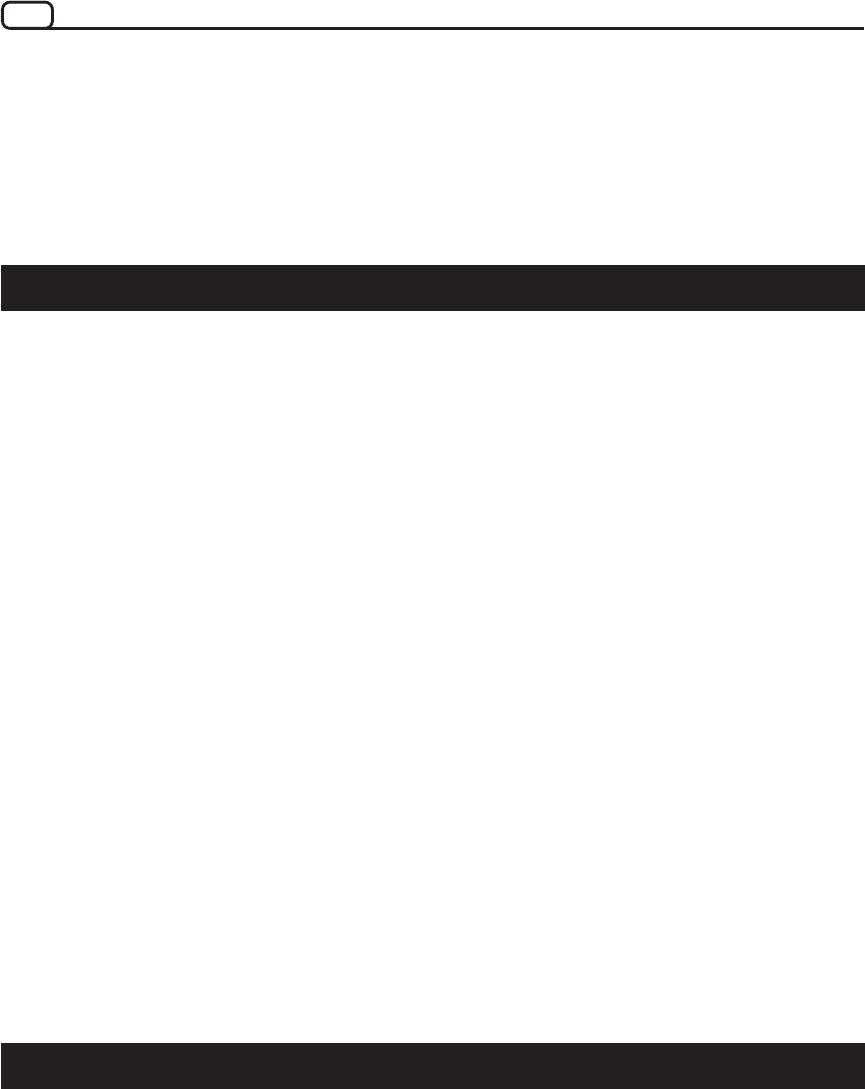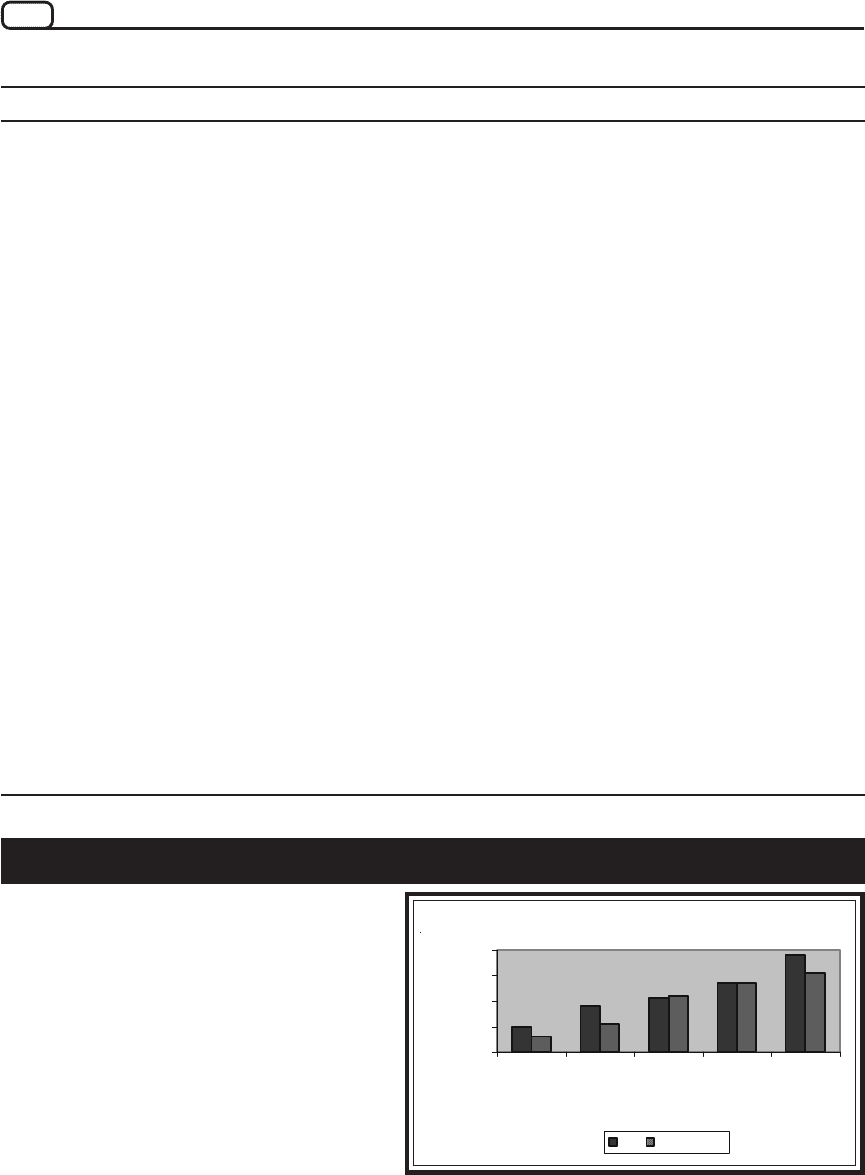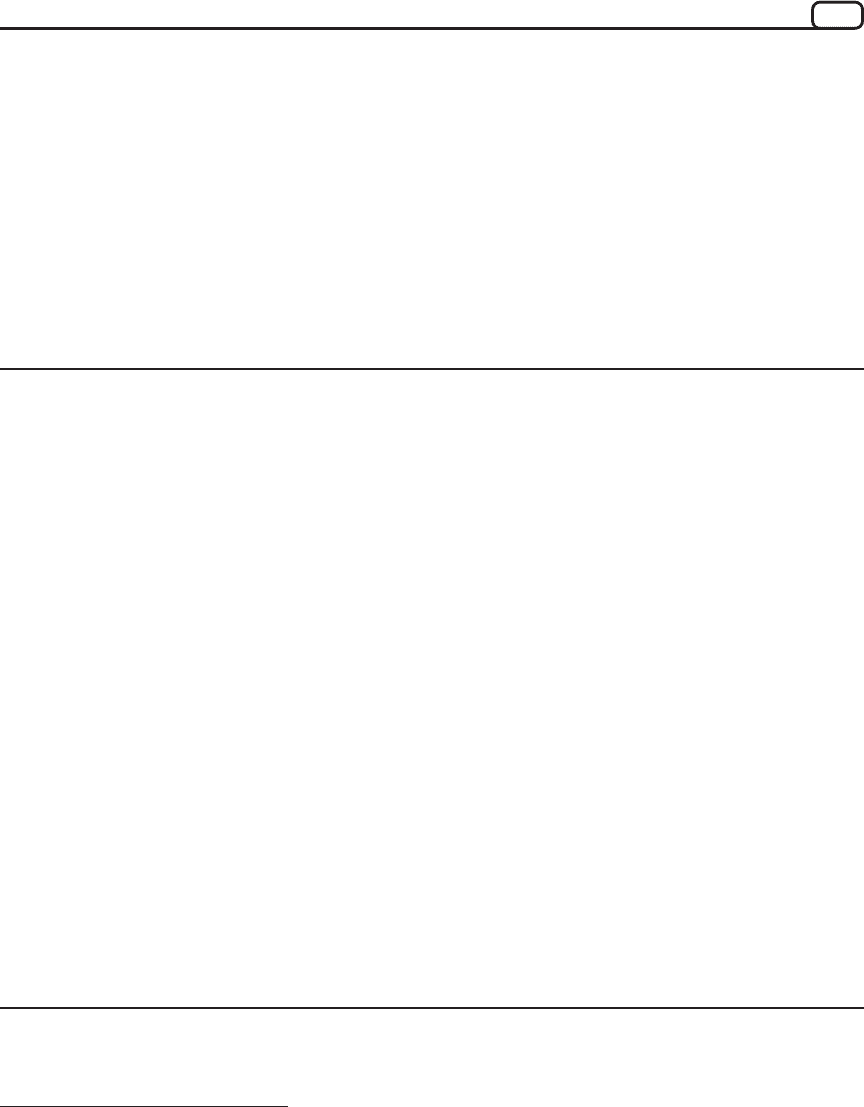Rajagopal. Marketing Dynamics: Theory and Practice
Подождите немного. Документ загружается.


378
Marketing Dynamics: Theory and Practice
Strategic alliances are especially useful for seeking entry into emerging markets. Foreign firms
in emerging markets seek to optimize the market performance in global economy, and strategic
alliances appear to be the obvious solution for mutual benefit.
Planning for Joint Ventures
A joint venture involves partnership between two or more business firms interested in pooling
their resources and expertise to achieve a common goal. The risks and rewards of the enterprise are
also shared. The reasons for forming a joint venture may include business expansion, development of
new products or moving into new markets, particularly overseas. The joint venture may offer more
resources, increased capacity of production, enhanced technical expertise and established markets
and distribution channels. Entry into an international market would be possible either as a wholly
owned subsidiary of any firm or as a joint venture. Joint ventures provide the best partner-like
manner of obtaining foreign trade income the firm chooses to begin a business relationship with a
firm in the host country. These two partners could agree upon a contract setting out the terms and
conditions of how this will work. Alternatively, joint ventures may be set up as a separate joint
venture business, possibly a new company. A joint venture company can be a very flexible option
wherein partners own substantial resources in the company, and agree on a managing strategy.
Firms of any size can use joint ventures to strengthen long-term relationships or to collaborate on
short-term projects. A successful joint venture can offer:
• Access to new markets and distribution networks
• Increase in production capacity
• Risk sharing and control process policies among business partners
• Working with specialized staff and technology
However, partnering in business may also be complex. It may consume time and effort to build
the right relationship, while operational problems may grow with the following ideological and functional
discrepancies:
• Objectives of the venture are not clear and communicated among the partnering firms
• There exists an imbalance in levels of expertise, investment or assets set into the venture
by the different business partners
• Coordination problems of cross- cultural issues and management styles affecting the
functional integration and workplace co-operation
• Lack of sufficient leadership and support in the early stages
Success in a joint venture depends on thorough research and analysis of aims and objectives.
This should be followed up with effective communication of the business plan to everyone involved.
International joint ventures are used in a wide variety of manufacturing, mining, and service industries
and frequently involve technology licensing. The company looking for a joint venture invites foreign
firms by issuing by a regional or global invitation to share stock ownership in the new unit. However,
the control of the unit will rest with the companies accepting either a minority or a majority position.
Largely, multi-national companies prefer wholly owned subsidiaries for effective control. A major

Innovative Marketing Strategies
379
potential drawback of joint ventures, especially in countries that limit foreign companies to minority
participation, is the loss of effective managerial control. This can result in reduced profits, increased
operating costs, inferior product quality, exposure to product liability, and environmental litigation and
fines. When firms decide to create a joint venture, the terms and conditions need to set out in a
written agreement. This will help prevent any misunderstandings once the joint venture is up and
running. A written agreement should cover:
• Structure of the joint venture
• Objectives of the joint venture
• Financial contributions, liabilities, distribution of profit, and other matters related to corporate
finance and accounts
• Protocol on transfer assets or employees in or out of the joint venture
• Ownership of intellectual property created by the joint venture
• Management and control of operational issues
• Responsibilities, tasks and processes to be followed in production and operations activities
• Protocol on managing liabilities, sharing of profits and losses
• Policy and process of disputes settlement between the partnering firms in the joint venture,
and
• Exit policies to being the joint venture to an end and cause and effect management at
post-closure.
Ranbaxy Laboratories Limited (Ranbaxy) has raised its equity stake in Nihon Pharmaceutical
Industry Co., Ltd. (NPI), a Joint Venture between Ranbaxy and Nippon Chemiphar Co. Ltd.
(NC), from the present 10% to 50%. With this enhancement, NPI will become a 50:50 Joint
Venture between Ranbaxy and NC. Ranbaxy and NC have signed the agreement on November
11, 2005. The increasing financial stakes of Ranbaxy in the shareholding of the joint venture
reinforces the Company’s strong commitment to the Japanese market. Further, the new
structure recognizes the equal commitment of both partners and their intent to grow the
generics business in Japan, in a collaborative manner. Ranbaxy and NPI have had a successful
relationship. This logical move by Ranbaxy to enhance its stake flows from the increased
comfort level of both partners and take the business to higher levels of performance. The
50:50 JV exemplifies the synergy and the strengths, which the respective companies bring to
the Joint Venture. In Japanese ethical pharmaceutical industry, NC is one of the first companies
to recognize the importance of generics and to make the generic business a pillar of the
company’s business. NC intends to be a leading company in Japan’s generics market. Both
partners have a complementary role to play. NC provides the regulatory know how and in-
depth knowledge of the Japanese market, while Ranbaxy brings to the table, its diversified
and rich generics product pipeline along with its astute understanding of the global generics
business.
7
7 Ranbaxy Laboratorios Ltd. : Ranbaxy Consolidates Relationship with Japan JV Partner Nippon
Chemiphar, Rainbaxy Press Release, November 11, 2005 http://www.ranbaxy.com/newsroom

380
Marketing Dynamics: Theory and Practice
Smaller firms often want to access a larger partner’s resources such as a strong distribution
network, specialist employees, and financial resources. The larger company might benefit from
working with a more flexible, innovative partner or simply from access to new products or intellectual
property (IP). Joint ventures offer mutual advantages for domestic and foreign firms to operate in a
global competitive business environment sharing both capital and risk and by making use of mutual
technical potentials. Japanese companies, for example, prefer entering into joint ventures with American
firms as such arrangements help them to ensure against possible trade barriers.
CONTROL MANAGEMENT
A control feedback system is one of the core components of international marketing management
and it serves to assess performance. Monitoring is one of the tools to measure the degree of the
success of international marketing and needs to be incorporated in the plan itself. The marketing
plans need to specify the periodicity of the control exercises and its prime objective. The monitoring
calendar for international marketing firms may be designed keeping the following checks in mind:
• Budgetary control
• Plan implementation
• Performance of marketing functions (11Ps) which include product, price, place, promotion,
packaging, pace, people, performance, psychodynamics, posture and proliferation
• Periodical appraisals of marketing information
• Social, cultural and political changes
Overall objective of these checks and controls is to determine the achievement of targeted
results on time. These points need to be administered from the corporate office of the business firm
in a centralized manner in order to enable effective planning and execution process. The standardization
of marketing-mix is usually centralized to ensure the quality of all the components of the mix across
the markets in the operational region. Besides, it is important to provide a common business language
across markets which would help in understanding local markets more analytically. The checks need
to be exercised at different levels of the marketing plan execution and to build-up a strong
communication and information system. A consolidated document of the target group index (TGI)
may be an appropriate tool for information processing and analysis. The variables which need to be
covered in the TGI include consumer goods, industrial goods, services, spatial and temporal trend of
demand and price, distribution patterns, marketing budgets, response to advertising, communication
services and the like. International marketing research needs to be conducted on specific issues of
interest and inferences may be tagged along with the Monitoring and Evaluation (M&E) process.
Nevertheless, M&E should be conducted periodically as a tool of control.
PROFIT IMPACT ON MARKETING STRATEGY
In developing strategy, both corporate and business unit management need to be able to realistically
appraise the level of performance that should be expected for a given business, and to be clear as to
what factors explain variations in performance between businesses, and within a business over time.

Innovative Marketing Strategies
381
Important guidelines that help address these questions have been developed from the Profit Impact
of Market Strategy (PIMS) program.
8
Background to the PIMS Methodology
At the heart of the PIMS program is a business unit research database that captures the real-life
experiences of over 3,000 businesses. Each business is a division, product line, or profit centre within
its parent company, selling a distinct set of products and/or services to an identifiable group of
customers, in competition with a well defined set of competitors, for which meaningful separation
can be made of revenue, operating costs, investment, and strategic plans. The business’s served
market is defined as the segment of the total potential market that it is seriously targeting by offering
suitable products and/or services and toward which it is making specific marketing efforts. On this
basis each business reports, in standardized format, over 300 items of data, much of it for at least
four years of operations. ROI is defined as follows: pre-tax after deduction of corporate expenses
but prior to interest charges divided by average investment where this is equivalent to the historic net
book value of plant and equipment plus working capital (i.e., total assets less current liabilities). Note
that four year averages are used for all figures. The information collected covers, inter alia, the
market environment, competitive situation, internal cost and asset structure, and profit performance
of the business. A full listing of the information captured by the PIMS database is given by The
Strategic Planning, Institute’s PIMS data manual.
9
Businesses in the database have been drawn from some 500 corporations, spanning a wide variety of
industry settings. These corporations are based for the most part in North America and Europe. An
understanding of why one business should be loss making while another achieves premium returns lies at
the heart of strategy formulation. To explain this variance, cross-sectional analysis is carried out on the
database to uncover the general patterns or relationships that account for these profit differentials. The
fundamental proposition that underpins this approach is that the name of a business has no bearing on its
level of performance. Research on the database has identified some 30 factors that are statistically
significant at the 95 percent probability level or better in explaining the variance in profitability across
businesses. These factors, which operate in a highly interactive way, collectively explain nearly 80 percent
of the variance in ROI across the database. The more powerful factors are listed in Table 10.1 under four
categories: marketplace standing, market environment, and differentiation production structure. It should
be noted at the outset that part of the explanation of variance is definitional. This comes about because
some of the profit-explaining variables, such as investment/sales revenue, contain elements, which are
also present in the construction of the dependent variable, ROL However; the emphasis is on behavioural
relationships. Definitional elements are included in the independent variables only when it is impossible to
separate out the behavioural and definitional effects of a particular factor.
8 Schoeffier S. Buzzell, R. D. and Heany D. F. (1974), Impact of strategic planning on profit performance,
Harvard Business Review, 52 (2), 137-45
9 Buzzell R. D. and Gale B. T. (1987), The PIMS principles, New York, The Free Press

382
Marketing Dynamics: Theory and Practice
MARKETPLACE STANDING
There are several measures of a business’s
marketplace standing: market share (the
business’s sales expressed as a percentage
of total sales made within the served market),
market share rank., and relative market share
(,the business’s market share divided by the
sum of the shares of its three leading
competitors). Whichever measure is adopted,
a strong positive correlation between
marketplace strength and profitability is
observed. Figure 10.1 shows the relationship
Figure 10.1 Market share and profitability
10
18
21
27
38
6
11
22
27
31
0
10
20
30
40
12345
Market Share (%)
Returns on
Investment (%)
ROI Market Share
Table 10.1 Key-determinants of ROL in the PIMS Database
Category of factor Impact on ROI as factor increases
Marketplace standing +
Market share +
Relative market share +
Served market concentration
Market environment +
Real Market growth +
Selling price inflation +
Market differentiation –
Purchase amount immediate customers –
Importance of purchase to end user
Differentiation from competitors +
Relative product quality +
Relative price –
Relative direct cost –
% Sales new products –
Marketing/sales revenue –
R&D/sales revenue
Capital and production structure –
Investment/ sales revenue –
Investment/ value added –
Receivables/ investment +
Fixed capital /investment –
Capacity utilization +
Unionization –
Labor effectiveness* +

Innovative Marketing Strategies
383
between market share and profitability. Businesses with strong market share (above 38 percent in
the upper quintile of the distribution) achieve on average a 38 percent ROI, compared to only 10
percent for their low-share counterparts (below 8 percent in the lower quintile of the distribution).
While the data exhibited in the above figure shows that strength of marketplace standing and
profitability are strongly related, the question remains as to why we observe the effect. The numbers
are a fact, but hypothesis and further examination are required to explain the relationships. It should
be remembered that market share in and of itself is not important: it is an output measure which
reflects a business’s historic and potential ability, to gain substantive competitive advantages within
its activities and in the marketplace.
10
Factors, which explain the underlying reasons why share may
help profitability, are shown in Table 2.
Table 10.2 Potential Benefits of Strong Market Standing
* “Experience curve” and “learning curve” benefits
Widely publicized by the Boston Consulting Group, the experience curve effect sees cost per
unit come down in a fairly predictable manner as cumulative volume doubles.
* Economics of scale and scope
Can drive down cost per unit throughout the cost structure of a business as well as benefiting
balance sheet productivity. Key areas for potential benefit are seen to be:
- Purchases: stronger negotiating stance with suppliers leads to preferential terms
- Manufacturing: plant scale and run length
- Distribution: drop size and drop density
- Marketing/R&D: spreading fixed cost component over a larger number of units
- Investment productivity
• Improved asset utilization
• Improved ability to control all current asset components and extend current liabilities
* Relative perceived quality
Higher market visibility offering the “low-risk” option for buyers in many instances. Scale
benefits should give ability to establish stronger brand and better control distribution.
* Competitive ability
- Potential to act as “Industry statesman”
- Opportunities to set and administer prices
- Size may deter competitive attack
- Size will heighten ability to control the chain from supplier to customers
- Better ability to spread risk and explore more competitive avenues
Powerful as these factors are, the fact remains there is nothing inevitable about the relationship
between share and profitability. Over 30 percent of the businesses in the database with market
10 Buzzell R. D. Gale B T and Sultan R. G. M. (1975), Market share - a key to profitability, Harvard Business
Review, 53 (1), 97-106

384
Marketing Dynamics: Theory and Practice
shares above 40 percent have ROL’s below the average of 22 percent. These businesses have often
become victims of their own success, wedded to historic investment decisions and burdened with
complexity costs.
What the PIMS data highlight is the danger of low market share in an environment that is either
marketing- or R&D-intensive. This is because both marketing and R&D have many of the characteristics
of a fixed cost. Businesses with small market shares often find that they have to spend as much as their
larger competitors on these activities, but do not have the same volume over which to spread the costs.
The result is that they are trapped in the low-profit cells. The value-for-money in a business is a critical
determinant of gaining competitive advantage. PIMS assesses this position by judging a business’s
relative competitive standing in terms of quality and price. It then examines, how that offer is supported
by new product activity, marketing, and R&D expenditure and the extent to which price is underpinned
by the relative direct cost position of the business. “Relative perceived quality” is seen as the key driver
of business performance under this category of factor. Quality in the MIS database is defined from the
perspective of the external marketplace. Customers evaluate the total benefit bundle of products and
services offered by the business and rank it relative to leading competitors as being superior, equivalent,
or inferior. The “relative perceived quality” measure used by PIMS is then computed by subtracting the
percentage of product and service attributes that are judged as being superior to competitors from the
percentage, which is judged as inferior. Relative perceived quality has a major positive impact on
profitability. Businesses whose offer is judged as clearly superior to that of competitors on average
achieve more than twice the ROI of businesses whose offer is judged as inferior. Not only is the
relationship between quality and return one of the key determinants of performance in the database, but
it is extremely robust in all types of business and marketplace situations. Businesses that achieve a
significant quality advantage relative to their competitors can choose to benefit in one of two ways:
either they can charge premium prices or grow market share at competitive pricing levels, or some
combination of both. Relative perceived quality is closely related to profitability. The implications appear
to be that high-share businesses that offer poor quality weaken in position, while weak-share businesses
that offer high quality strengthen in position - both extremes may be transitory in nature.
Capital and Production Structure
Within this category of factor, the most powerful of the PIMS findings relates to investment
intensity. The definition of investment in this context is fixed capital, measured on an historic basis as
the net book value of plant and equipment, plus working capital, defined as current assets less current
liabilities. Investment intensity itself is measured in two ways: first, investment is rationed to sales revenue
in the conventional manner; and, second, investment is rationed to the value added actually generated by
the business (where value added is defined as net sales revenue less all outside suppliers’ inputs). Both
measures are simultaneously employed to assess investment intensity, as many businesses have low levels
of investment to sales (turn their asset base frequently) but because of a high bought-in component have
high levels of investment to value added, Having cautioned that a balanced view on the overall investment
intensity of a business is only achieved by using both measures in combination, on an individual basis each
measure is similarly related to profit performance in the PIMS data base, and here the more familiar
investment/ sales revenue ratio is employed to illustrate the investment intensity effect.
As the investment intensity in a business rises, so the ROI that it achieves falls dramatically. This
finding is the most powerful negative relationship in the database, with ROI’s averaging only 8

Innovative Marketing Strategies
385
percent for investment intensive businesses, compared to 38 percent for low investment intensity
businesses. The finding is consistent with the experiences of many businesses in sectors such is
airlines, shipbuilding, base chemicals, low alloy steel, refining, smelting, and commodity pulp and
paper, which in large degree achieve at best modest rates of return. Part of the reason for the
relationship is definitional. As the investment level in a business increases, it simultaneously increases
the denominator of the ROI ratio, hence dragging down the value of the ratio. That there is a
behavioural element to the investment intensity effect is vividly illustrated, if the return on sales
(ROS) achieved at different levels of investment is considered. If a business is to hold ROI as
investment intensity increases, ROS should increase smoothly. In practice, ROS is at best flat, and in
fact starts to tail off at higher levels of investment intensity. Moreover, it should be remembered that
return has been taken pre-tax and pre-interest, with no financial charge made on the amount of
investment used in the business. If even a modest capital charge rate is applied to a business’s
returns to reflect its investment, the relationship would start to turn sharply down. If businesses were
sufficient to offset the level of investment that they need to sustain their sales, there is indeed a
powerful behavioural element to the ROI/investment intensity finding.
At the start, it was observed that profit performance varies enormously from business to business
and within a business over time. Several of the key research findings arising from the PIMS database
that help to explain this variance in performance have been discussed. Care must be cautioned in
interpretation. Comprehensive insight is not obtained by examining one or two factors at a time: it
requires a multifactor approach in order to start to capture the complexities and tradeoffs in business.
To this end, PIMS researchers have developed several models that help assess the level of ROI,
cash flow, productivity, and so forth that should be expected for a business, given its structural make-
up. Once these benchmarks have been established, attention can be focused on the next stage of
strategy formulation; that of managing change. It can be extremely misleading to use the general
findings presented for this purpose. That market share is generally closely related to profitability is
observable; but that is not to argue, of course, that a business should try to grow share in all instances
- the feasibility and cost-benefit trade-off of such a move needs close examination. To this end, other
modelling techniques and the database itself, via matched sample, analysis, provide important empirical
vehicles for the identification and evaluation of particular strategy moves by researchers and
practitioners alike.
MARKET UNCERTAINTIES AND ENTRY DECISIONS
In turbulent markets the competitive strategy provides the conceptual magnitude that integrates
various functional activities and marketing programs for sustaining the competitive threats. The
effective competitive strategies have a direct bearing on possessing the relative market share and
growth of the business organization. The strategies are the directional statements and need to be
converted into the step-by-step plan of action for effective plan implementation. The strategic directions
have four options that can be expressed by 4As - arena, advantage, access and activities. The arena
may be defined as serving the targeted market segment through an appropriate scale of operations
and scope of activities to be performed for competitive advantage. The advantages in the process,
consist of positioning the products theme that differentiates the business from competitors. The
access may be referred to the communication and distribution channels used to reach the market in
the uncertain business conditions. These activities are interdependent and are affected by the change

386
Marketing Dynamics: Theory and Practice
in any of the factors. The arena of the market largely dictates the customers, to be served by the
company, the competitors to by-passes and the key success factors to be considered upon. Each
market has distinctive profile of key success factors developed by the attributes of the market. The
recent development of corporate strategies shows that many multi-national companies are considering
their choice of the market arena based on the following factors:
There is an increasing trend of market fragmentation. New segments with specific needs
are emerging and are being served by the specialist competitors by offering tailor made
goods and services.
Traditional market boundaries are disappearing as a consequence of the rush of substitutes
emerging due to the technological growth..
Transformation of existing self-contained regional and national markets into global markets.
In the above discussed situations the challenge for the corporate sector management may be observed
as to find the right balance of global reach and standardization of the activities versus the traditional
strategies or local adaptation. The companies need to find out the competitive advantages within the
chosen arena of business. The core issue associated with the competitive advantage is positioning of the
theme, that sets a business apart from the rivals in the way that is meaningful to target the customers. It is
necessary for the companies to move aggressively against the competitors to retain their market territories
and build a strong defense. Thus, Kodak asserted itself in the film market against the strategies of Fuji in
American market. The supply gluts also put pressure on advantages. The markets for the pharmaceuticals,
electronics and automobiles suffer chronic global overcapacity to the extent of 15-40 percent. Such
problem situation demands the companies to develop the strategies of competitive advantage to hold the
key success factors and become the market leader. Such strategies are required as there are too many
firms competing and the customers may back integrate by their marketing requirement rather than buying
them. This situation reduces the volume of market demand relative to supply and the customers may sell
their excess capacity on competition with their one-time supplier.
Need for the competitively advantageous strategies may further be justified as a large number of
firms are increasingly productive in reference to the rapid diffusion of the technologies. The customers’
bargaining power also works out to be an instrument to either broaden or narrow the differences
between the competitors. The companies that use intermediaries are often encountered with balancing
the power of distribution and delivery of services. In consumer markets, the retail trade is forcing
major concessions on the multi-national brands. Such strategies hold the access to the retail network
through a long chain of channels. Conventionally the choice of appropriate scale in business and
scope thereof were guided by the concepts of the bigger is better and umbrella control of activities.
In the current era of globalization, the decentralization of activities and production sharing have
become more effective tools in marketing. The profit centre approach (PCA), control circles and
total quality management practices has endorsed the success of small integrated units operating in a
well defined market. In view to promote the PCA concepts and maintain the control circles, the large
companies are increasingly creating the autonomous, small and entrepreneurial units to find responsive
solutions to the customer problems in the well defined market niches.
11
Corporate structures are
11
Frederick E. Webster Jr.: It’s 1990- Do you know where your marketing is?, Mass Marketing Science
Institute, Cambridge 1989.

Innovative Marketing Strategies
387
changing in order to accommodate the concept of PCA and control circles and are exploring for the
long term advantages by way of heavy investment to develop the core competencies.
BMW, Honda, and Toyota, among other companies, begin with a strong brand that imparts
sales momentum to each model. Brands that are weak—because their products have acquired
a reputation for shoddy workmanship, their designs are not evocative, or their models bear
little relationship to one another—cannot pursue this top-down approach. But a company
stands a good chance of selling more cars and, step by step, of rehabilitating the brand, if
managers take pains to match each model to the consumer segments most likely to be
interested in it, identify and overcome the obstacles that keep browsers from becoming
purchasers, and emphasize both the functional and the process and relationship benefits of
the model in question. BMW Direct is an initiative of BMW (GB) to help selected company
car fleet buyers streamline their service for employees. BMW Direct is a web based, fully
personalized, car configuration and ordering system for the purchase of new BMWs. This
highly efficient rules based web application delivers a level of information previously
unavailable outside of a showroom. The BMW Direct solution provides users with the
ability to view details on all eligible cars online and then go on to configure them against a
full menu of accessories. BMW Direct is truly ‘CRM’ compliant, providing two-way
communication via automated alerts and e-mails and incorporating a Contact Centre to
ensure immediate access to trained product advisors. Users can track online the status of
their individual orders whether by web, phone, fax or email. The call centre functionality
includes phone and e-campaign generation, customer enquiry handling and profiling to
customised promotions.
12
Post-sales support is delivered using a thin client solution, (using
Citrix) to BMWs contact centre in Croydon and order management centre in Bracknell in UK.
Technological changes are the main impetus behind new market opportunities. The extent of
such change may be explained from super technologies to the appropriate and intermediate technologies.
The strategic choices have wide ranging ripple effects through the organization that determine the
key success factors and growth performance. Some companies would be making right strategic
choices by improving the implementation process of competitive advantages. These companies are
guided by the shared strategic vision and are driven by the responsive attitude towards the market
requirements. They emphasize the continuous strive to satisfy the customers. A strategic vision in
managing markets may be understood as the guiding theme that explains the nature of business and
the future projections thereof. These projections or business intentions depend on the collective
analysis of the environment that determines the need for the new developments or diversifications.
The vision should be commissioned on a concrete understanding of the business and the ability to
foresee the impact of market forces on the growth of business. The vision will motivate the organization
for collaborative business planning and implementation. The powerful visions are also the statements
of intent that create on obsession with winning thorough out the organization.
13
The business strategy
broadly incorporates the following dimensions:
Customer needs
Consumer segments
12 Rajagopal (2003), Building Customer Loyalty Through Relationship Networking : A Case of BMW
Mexico, Discussion Case, ITESM, Mexico City Campus, 1-16
13 Day Geogr. S. (1990), Market Driven Strategy: Process for Creating Value, The Free Press, New York, 10-
18
